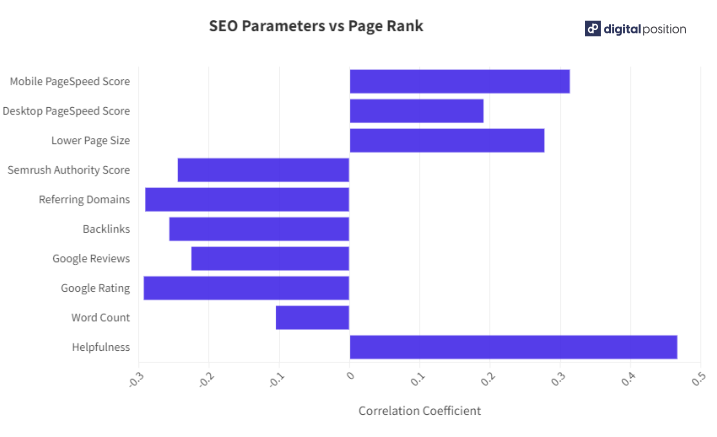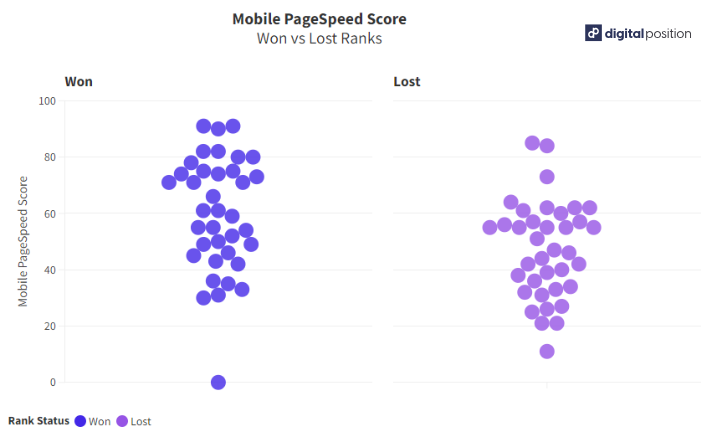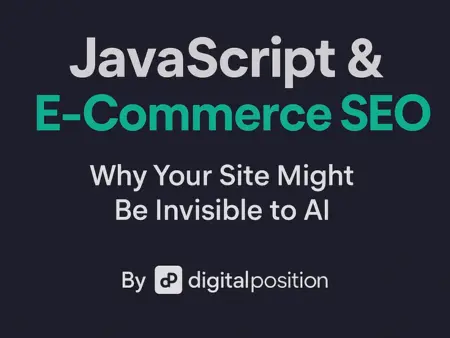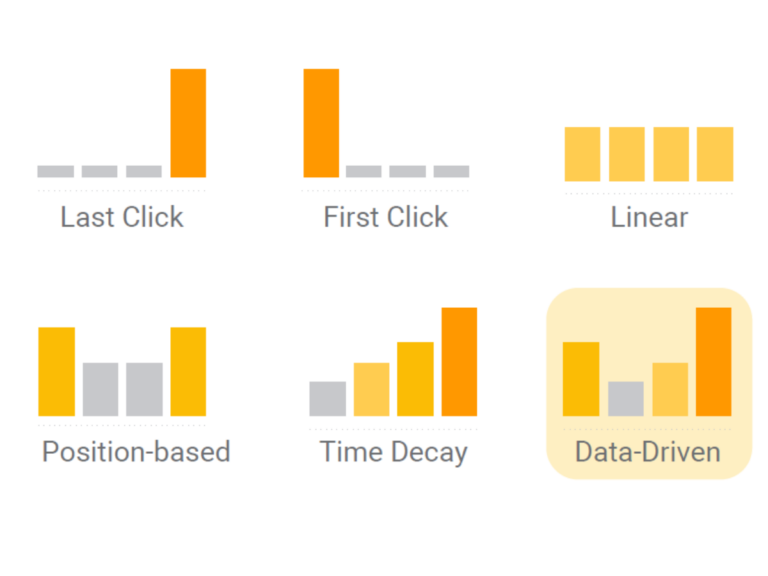Thousands of websites hit, many deindexed entirely. Over 100 million monthly organic views wiped out, and millions more in lost leads and revenue. That’s the aftermath of Google’s March 2024 Helpful Content Update (HCU).
Does it spell the end of organic traffic for your business? Is your investment in SEO circling the drain?
To address these questions, we decided to run a study and gain answers backed by real data. We analyzed search engine rankings for 13,165 pages across 270 domains to figure out what works and what doesn’t when it comes to SEO for small businesses, post the March HCU.
(And what we found is super insightful, even if we do say so ourselves.)
In this post, we’ll break down what these changes mean for your business — not just in terms of a specific update, but also the overall direction that search is headed, and how you can stay ahead and not have competitors eat your lunch.
Bottom line up front: Is SEO really dead for small businesses?
If you’re in a rush, here’s the quick summary (but trust me, you’re going to want to read the rest of it later):
SEO is not dead, but it has changed dramatically. Bigger SEO changes are imminent in the coming months. Generic and over-optimized content won’t work. Near-term, this means focusing on building differentiation and value. Long-term, it means diversifying your marketing distribution.
Of course, there’s a lot more nuance to consider to make meaningful changes to your marketing strategy. (Hence the rest of this article.)
But why should you trust what we say? After all, as a digital marketing agency, we have incentive to say that SEO always works, right?
Actually, no.
Firstly, there’s a lot of competition out there — if we don’t help you succeed and grow, you’ll just find someone else who will.
Secondly, we’re a small business ourselves; we recognize that continued success hinges on attracting a steady stream of customers through the most cost-effective means. If the SEO approach that worked for years suddenly stops delivering, we need to critically assess the situation and adapt before it’s too late.
Head-in-the-sand isn’t a great success strategy.
But also, you don’t have to take our word for it. That’s why we’re presenting the data. Dive in.
What businesses need to understand about HCU
Although Google’s update caused a huge stir in March 2024, HCU is not a brand-new concept. Google announced the very first Helpful Content Update in August 2022, with the aim of prioritizing search results that genuinely help users.
Over the years, the internet has become saturated with content created primarily to rank high in search engines, rather than being useful to users. The explosion of AI-generated content with the arrival of LLMs like ChatGPT has only made the problem worse.
Spammers created millions of pages purely to manipulate search engines into sending traffic, instead of actually helping humans. Clearly, Google doesn’t want their users to have a frustrating search experience, so the latest HCU is focused on filtering out content that feels unhelpful and unoriginal.
The outcome is that thousands of sites were hit, losing rankings on millions of keywords. Semrush reports that volatility in Google search engine results pages (SERPs) reached all-time-highs last month.

Understandably, this turbulence has generated a lot of panic, fear, and anger.
But as a business owner or manager, it’s critical that you distinguish hard facts from hysteria.
Claims that “SEO is dead” are being bellowed from the virtual rooftops, but that’s nothing new.

Such claims have been around since at least 1997, and they keep resurfacing every time there’s a Google algorithm update.
But just to be sure, we wanted to check if it’s actually for real this time.
Post-HCU ranking factors: analyzing 13K+ URLs
To gain real insights into how the Helpful Content Update has impacted search rankings, we analyzed over 13,165 URLs from 270 domains across 10 different business categories, including:
- Law firms
- Wealth management firms
- Certified public accountants
- Roofing companies
- Garage door installation and repair
- HVAC providers
- Plumbers
- General contractors
- Gyms
- Driving schools
We used Semrush to gather data on ranking positions and keywords.
Our goal was to identify the key ranking factors that now carry more weight in Google’s algorithm for determining what content is truly “helpful” and deserving of higher positions.
Why we chose these business categories
For small businesses and local service providers, organic search traffic from Google has been a lifeline to affordable customer acquisition. Especially since paid ad rates are often highest in these small business categories, a successful SEO strategy could literally be the difference between thriving and going under.
We focused specifically on sites that incurred ranking declines across all or most of their ranked URLs.
We also filtered these down to URLs that had had first-page rankings on commercial keywords with at least 100 monthly searches, and that previously held these rankings for at least three months (December 2023 through March 2024).
This filtered for pages likely impacted by the recent update versus normal ranking fluctuations.
Factors analyzed
For each impacted URL, we analyzed these 11 key SEO parameters:
- Mobile PageSpeed score
- Desktop PageSpeed score
- Page size
- Semrush Authority Score
- Referring domains
- Backlinks
- Google reviews
- Google rating
- Word count
- Content helpfulness
- Page type
While not exhaustive of all 200+ ranking factors, this analysis was designed to provide directional insights into how small business SEO needs to adapt for a more user-focused future of search
We compared these metrics across the loser pages that lost rankings against new “winner” pages that had supplanted them on the first page of results for the same keywords.
The objective was to identify patterns, similarities, and differentiating factors that could expose what type of content and pages Google’s latest systems now favor.
Our final shortlist ended up with 80 URLs across 40 different keywords (with URLs that won and lost the rank for each keyword).
Ranking content in the HCU era: what the data says
For the first ten parameters, we calculated correlation with improved search engine rankings using the Pearson correlation coefficient. Here’s how they stack up (we’ll talk about Page Type later):
| Parameter | Correlation with Search Ranking |
|---|---|
| Mobile PageSpeed Score | 0.31351 |
| Desktop PageSpeed Score | 0.19067 |
| Page Size | 0.27741 |
| Semrush Authority Score | -0.24462 |
| Referring Domains | -0.29078 |
| Backlinks | -0.25659 |
| Google Reviews | -0.22519 |
| Google Rating | -0.29292 |
| Word Count | -0.10492 |
| Helpfulness | 0.46642 |
And here’s what that looks like.

This data reveals some fascinating insights into what Google now prioritizes as truly “helpful” content deserving of higher rankings.
Traditional “core” metrics like backlinks, referring domains, and domain authority don’t correlate particularly well with better search rankings. Instead, the strongest positive correlations were seen for core web vitals, optimized page sizes, and our “helpfulness” score.
It’s important to remember: correlation does not always imply causation. (Just because there’s a spike in ice-cream consumption and shark attacks at the same time every year, we can’t conclude that one causes the other.)
That said, there are still plenty of actionable insights we can derive from this analysis. Let’s break these down:
Mobile and Desktop PageSpeed Score

Core Web Vitals like mobile-friendly page speeds have been an increasing priority for Google over the past few years. That seems to be unchanged with this update, as pages that deliver a smooth, ultra-fast user experience tend to perform better in search rankings.
Bloated, slow-loading pages are getting filtered out, even if they tick all the other traditional SEO boxes. Unsurprisingly, this correlates clearly with overall leaner, more optimized pages comprising smaller file sizes.
It’s worth noting that Mobile PageSpeed score corresponds 1.6 times more strongly to higher search rankings than Desktop PageSpeed.
The (Un)usual Suspects
Typically, backlinks are extremely influential when it comes to rankings in organic search, with “bigger”, more “powerful” sites consistently outranking smaller sites with fewer backlinks.

With the sites we analyzed, this no longer appears to be as important. In our dataset, 94% of the pages that won ranks had fewer backlinks than the pages they displaced, and 91% of them had fewer referring domains.
The same is also true for word count. The very low negative correlation confirms that word count or content length alone is not a deciding factor in what Google deems as “helpful” for searchers.

Surprisingly, even the number of reviews and ratings on a business’s profile don’t correlate particularly strongly with higher ranks. Having more reviews or higher ratings doesn’t directly equate to higher rankings; 86% of the results had fewer reviews than the pages they displaced. The average rating of businesses associated with the pages that won the ranks was 4.7, as opposed to 4.8 for pages that lost them.
Helpfulness Score
The biggest takeaway is the powerful 0.47 correlation with our “Helpfulness” scoring. This custom metric aimed to assess how uniquely insightful, engaging, and satisfyingly applicable each page’s content would be for the searcher’s implied intent behind each keyword.
It is 1.48 times stronger than Mobile PageSpeed, the second-strongest correlation factor in our dataset, and 3.9 times stronger than the rest of the parameters.
The higher a page scored on providing a stellar, differentiated content experience tailored to user needs – the more it was rewarded with enhanced visibility in the post-HCU results.
But wait a minute — how does one actually measure and quantify the “helpfulness” of content? Isn’t that subjective?
Quantifying content helpfulness
To quantify helpfulness, we started off with Google’s guidelines for evaluating content helpfulness.

Using these guidelines, we then used an AI LLM (in this case, Claude) to create a framework for measuring helpfulness.

To maximize consistency and objectivity, we then provided the content from each of the pages on our URL shortlist, with a standardized prompt to rate its helpfulness on a 10-point scale.
To minimize the odds of bias, we used a double-blind: neither Claude nor the VA inputting the data into Claude, were given any data on which of the URLs were rank winners or losers. (The prompt is provided below — feel free to copy it and use it for your own SEO experiments, if you wish.)
Helpfulness Evaluation Prompt
We ran this prompt in Claude 3 Opus. Your results may vary:
Please evaluate the following article text using this Helpfulnes Framework:
1. Purpose: Weight: 40%
a. User-centric content 20%
b. Alignment with search intent 20%
2. Quality: Weight: 40%
3. Presentation: 20%
For the "Alignment with search intent- sub-category, please consider the provided keyword as the search query.
After evaluating the article ten based on the framework, please provide:
1. A score out of 10 for each dimension and
2. A brief justification for each score
3. The total weighted helpfulness out of 10
Keyword: [Insert keyword here]
Article Text: [Insert article text here]Page Type
Much has been made of the increased prevalence and visibility of forums like Reddit and Quora in Google search results. However, this appears to have mainly affected informational and “niche” sites, and is less of an issue for queries relevant to real businesses.

For the businesses we analyzed, the prevalence of blog posts and informational resource pages declined by 12% in the SERPs. For “how to,” queries, video results from platforms like YouTube and TikTok seemed even more prevalent than before.
What HCU means for your business
The data from our study shows that traditional SEO factors like backlinks, domain authority, and content length are taking a back seat to prioritizing pages that deliver outstanding user experiences aligned with searcher intent.
For businesses that have relied heavily on checklist-style SEO tactics without a sharp focus on user value, this spells trouble. Continuing with outdated approaches of pumping out keyword-optimized, thinly-researched content is a recipe for getting filtered out as “unhelpful.”
The bigger picture: the future of organic search traffic for your business
Beyond just the current implications, the March HCU represents the start of a much bigger paradigm shift. Google themselves have said that their goal is to reduce spam in search results by just 40% for now, meaning that a lot more changes are yet to come.
As renowned SEO expert Matt Diggity said recently:
People of the future will look back and think of it as very clunky to input a word or phrase into a form, click a button, read through a list of links, click through to one or more of them, and then scan those subsequent pages again to finally find the answer or address the need that you have. Why not just get AI to instantly answer the question or take the action on your behalf? That’s the future.
While that future vision may still be years away, it raises an existential question: in a world where AI can directly provide helpful answers and solutions, what’s the relevance of traditional websites?
As AI capabilities rapidly evolve, the entire internet experience may shift from clicking through links to obtaining instantaneous, personalized results tailored to each specific need. That said, LLMs will still need
For businesses, this means the pressures of prioritizing audience-first, differentiated value over conventional checklist SEO will only intensify.
Diversifying one’s digital presence and marketing distribution will become crucial hedges against over-reliance on any one channel that could be disrupted.
Key Takeaways and Action Steps
Craft a purposeful content strategy
The strongest ranking signal today is providing content with a clear user-first purpose that genuinely addresses searcher needs and intentions in an insightful, thorough manner. This requires developing a thoughtful content strategy that maps topics, formats, and editorial priorities to your target audiences’ most pressing questions and pain points.
Optimize for Core Web Vitals
Google’s visibility rewards for lightning-fast performance can no longer be ignored. Audit and address any lagging Core Web Vitals like mobile page speeds through technical tuning of your site’s code, server, and media compression. Lean, optimized pages can provide the impetus needed to escape the internet blackhole.
Quality over quantity
Invest in developing richer, more substantive content with unique insights and depth — rather than churning out repackaged thin content just for the sake of publishing frequency.
While backlinks aren’t the end-all factor they once were, garnering quality links, positive reviews, and a strong industry reputation and “EEAT,” still contributes to Google’s assessment of a site’s authoritativeness. Don’t neglect proactive authority-building efforts.
Diversify beyond organic search
As SEO gets more challenging with evolving algorithms and AI advancements, you should explore diversifying your marketing mix beyond over-reliance on any singular acquisition channel.
Consider expanding into paid advertising, email marketing, social media, referral programs and video platforms (feature real people rather than AI-generated content) to build real connection, differentiation, and resilience.





no replies